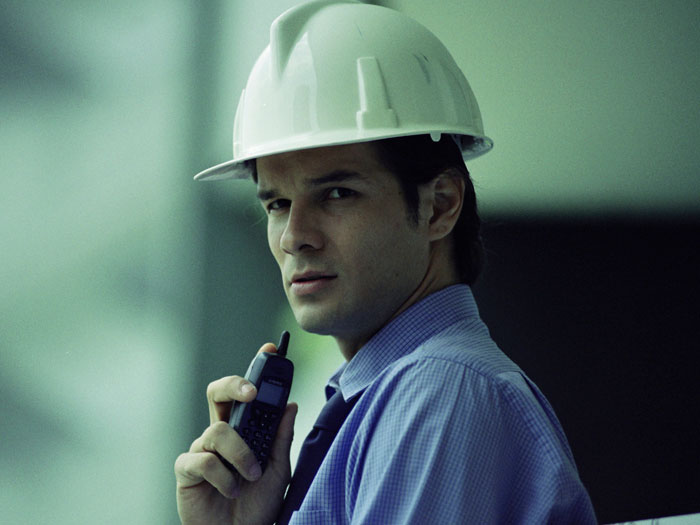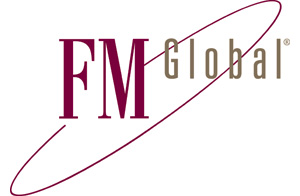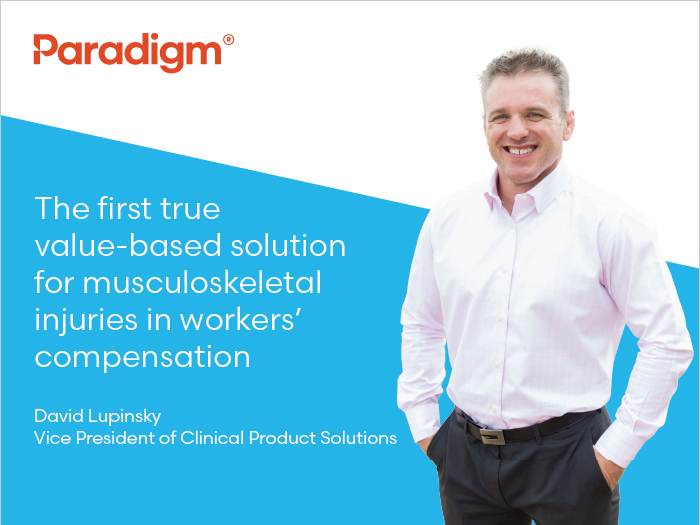Risk Scenario
Hard Crash
Disclaimer: The events depicted in this scenario are fictitious. Any similarity to any corporation or person, living or dead, is merely coincidental.
Part One: Pressure Builds
Barry Little cast an appreciative glance back at the front door of the elementary school where he’d just dropped off his little girl Lila, age 5, for her morning kindergarten class. He was grateful that he trusted Lila’s teacher and the rest of the school staff.

Walking to his car, with the late September sun warming his face, he ticked off the other reasons he had for being happy. Ten minutes before dropping Lila off, he’d dropped off her little brother Benjamin at daycare. Benjamin was a joy, now speaking in full sentences and displaying a wry sense of humor.
Driving to work, Little ruminated on his further good fortune. He was celebrating the one-year anniversary of his promotion to plant manager of the Glaucus Inc. ammonia plant in nearby Edmonton, in the province of Alberta, Canada.
His promotion coincided with increased natural gas production in the fields close to the Edmonton plant. Natural gas is the feedstock for ammonia, and its recent abundance and lower cost was a boon for the company.
Just that week, his managers asked him to extend the current ammonia production run out two years to take advantage of the lower cost of natural gas and the burgeoning demand for fertilizer in the emerging economies of India and China.
Ammonia is a key raw material for the production of fertilizers. But there are inherent risks. Ammonia production is a demanding process on plant equipment. And the extended production run was being performed at the expense of regularly scheduled equipment maintenance.
Little knew the reasons for management’s decision. With global revenues at close to $1 billion annually, publicly traded Glaucus could run that figure close to $1.25 billion in this two-year window.
There was another factor gnawing at Little. The vastly increased production of natural gas in North America meant that chemical manufacturing was on the upswing. New plants were being built and existing plants expanded which increased lead times for equipment and spare parts
In this high-demand environment, contingency plans that included the purchase of spare parts were important to minimize any downtime due an equipment breakdown. Little, relatively new to this position, was in the process of drafting contingency plans, but they weren’t complete. The plant had some spare parts and equipment, but it was questionable whether that was adequate.
***
Little was relaxing that night after dinner, keeping half an eye on an Edmonton Eskimos game, when his cell phone lit up.
A fast moving storm was moving through Alberta. No sooner had Little seen that news on his phone, when he got a call. A lightning strike at the Glaucus plant tripped the electrical system off line, triggering a “hard crash” and a complete shutdown of the plant.
“Gotta go,” Little said to his wife as he jumped up and grabbed his raincoat.
“Where to?” she said.
“The plant’s been knocked out by a lightning strike. I gotta get over there!”
“Drive safely!” she called after him but he was already out the door.
Driving to the plant with rain pelting his windshield, Little’s mind raced.
“What to do?”
The truth was, he didn’t know.
Part Two: Break Down
When Little arrived at the stricken plant, his assistant plant manager, Denny Ashe, was waiting for him just outside the door.

“It’s a complete shutdown, nothing is on line,” Ashe said as he and Little walked into the plant together.
Little strode out into the plant’s main control room. Nothing seemed amiss, but everything was shut down.
“Do we have power?” he asked Ashe.
“Yep, we’re just reconnected,” Ashe said. “The strike tripped our system, but the circuit breakers have been reset and service has been restored.”
Little stood, looking at the idled control panels for the plant’s equipment and at the faces of the operators, who were watching him expectantly. The faces of the watching operators triggered something in Little.
It looked like they were expecting him to act, so he did.
Little turned to Ashe.
“Let’s start it back up.”
“Are you sure?” Ashe said.
Ashe was just asking a question, but it angered Little.
“Yes I’m sure!” Little thundered.
“Start it up like I said!”
Just then, the phone number of Little’s manager flashed on his phone. Flustered, Little didn’t answer the call.
What Little didn’t know and didn’t take the time to find out was that a critical steam turbine driving a process compressor was damaged when the lightning strike shut the plant down so suddenly. The turbine was vulnerable because it hadn’t been properly maintained due to production demands.
Little went out and stood in the middle of the compressor building with his hands on his hips as Ashe worked with the operators in the control room to get the plant back on line.
When the plant restarted, the turbine started to vibrate excessively. Without vibration trips, the turbine continued to operate. The vibration caused a lubrication oil line to break, which in turn started a fire.
“Fire!” one of the turbine operators yelled as he ran to grab a fire extinguisher since there was no sprinkler protection installed, but another turbine operator beat him to it. The fire was so intense that it burned the two workers severely.
Denny Ashe shut the plant back down as calls went out to the emergency response team.
As a member of the emergency response team used a first-aid kit to attend to the turbine operators, Little stepped back, realizing that he still held his phone in his hand.
He couldn’t look at the injured workers laid out on the compressor building floor, with their co-workers offering them aid. He couldn’t face it.
Little just stared at his phone in shock, unwilling to dial his boss’s number.
***
It took a week of meetings between plant operational personnel to determine just how bad the situation was.
The team determined that the $10 million turbine, which was crucial to the plant’s production process, was totally destroyed.
The plant was powerless without the turbine; it couldn’t produce ammonia.
“I can’t tell you,” is what the equipment manufacturer said when Little called him and asked when they could deliver a replacement.
“It could be six months, it could be nine months, it could be longer,” the manufacturer’s representative said.
“When are we going to be back up?” is what Little’s manager asked him, two weeks after the shutdown and the turbine fire.
“I can’t answer that question,” Little said.
Part Three: A Chilling Dawn
Seven months after the lightning strike and the turbine fire that injured two workers, Little finally had an answer to that question.

With a date for the delivery of the replacement turbine now firm, it would be two more months before Glaucus Inc.’s Edmonton plant could resume ammonia production.
Little’s initial inability to tell senior management when the plant would reopen motivated them to send an engineering team from the company’s Shreveport, La., plant to conduct a complete inspection of the Edmonton plant.
“I want to state for the record that I was asked by management to extend the production run at the expense of the regularly scheduled maintenance,” Little told the inspection team as they sat down with him and some of the senior management team to report on their findings.
“Barry, we’re not here to officiate between you and your manager,” the head of the Shreveport engineering team told him.
“We’re just here to report on what we found.”
The engineering team reported that the Edmonton plant’s electrical system was well used and wasn’t adequately maintained. It didn’t matter that Barry Little had only been plant manager for a year, the fault lay at his feet.
The engineering team also faulted the Edmonton operation for extending production without maintaining the plant’s equipment; not installing vibration trips on the critical turbine; not adequately maintaining turbine integrity; failing to have a written contingency plan, including maintaining spares for critical pieces of equipment and not installing sprinkler protection on the turbine.
Instead of being on track to increase its revenues from $1 billion to $1.25 billion, Glaucus Inc. saw its revenues in the year of the Edmonton plant failure slip down to $900 million. The work stoppage at Edmonton cost the company $125 million in plant repairs and lost revenues.
When it reported its full-year figures, the company’s stock price tumbled 20 percent.
The fact that Barry Little was in the process of writing a contingency plan when the plant experienced the lightning strike and hard crash didn’t help him much. He was fired in the first quarter of the following year.
![]()
Risk & Insurance® partnered with FM Global to produce this scenario. Below are FM Global’s recommendations on how to prevent the losses presented in the scenario. This perspective is not an editorial opinion of Risk & Insurance®.
No company can afford the loss of property, lives and productivity from destruction caused by fire, natural hazards or equipment outage. Equipment damaged in minutes can take many months to repair or replace. If there is business interruption, revenue, stock price and shareholder confidence all can take a major hit. Market position may be lost. Inflation and material shortage may make rebuilding difficult and costly.
Of course, insurance helps alleviate some of the cost associated with property damage. But insurance isn’t the only answer, especially when considering the loss of customers, productivity, goodwill and staff.
Reliable equipment delivers resilient service to your production, utility and support systems, can reduce risk to your business and help your organization maintain a competitive advantage.











